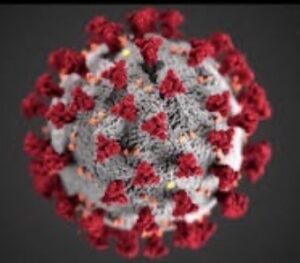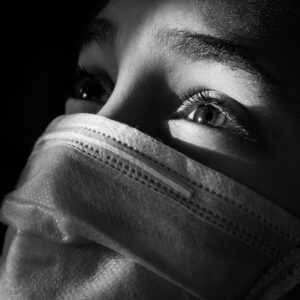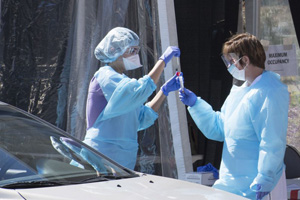
The Outbreak
In Wuhan, China, four unusual hospital cases of atypical viral pneumonia were reported to the local center for disease control on December 27, 2019. Globally, as of September 2024, COVID-19 has infected over 770 million people, resulting in more than 7 million reported deaths and lowering global life expectancy by 1.8 years.
In 2020 the human race experienced its first global pandemic from a new and novel variation of the coronavirus (the same class of viruses that cause the “common” cold), SARS-CoV-2, more commonly referred to by the disease it causes, COVID-19, where ’19’ indicates the year in which the disease emerged. The combined human drama and trauma that marked this infection created many firsts—and the opportunity for displays of resilience, creativity, dedication and heroism. But it also left many numb, suspicious, depressed and turned off by the whole affair.
In Wuhan, China, four unusual hospital cases of atypical viral pneumonia were reported to the local center for disease control on December 27, 2019. The epidemiological investigation of this outbreak began on December 30 after three more cases were identified. These early cases were all workers at the Hunan seafood market, and some of their family members. Authorities officially notified the World Health Organization (WHO) on December 31, 2019. By January 9, 2020, a novel coronavirus had been identified, and by January 12, the first genetic sequencing was shared—a critical step towards developing a vaccine. According to the CDC, by January 13, the first test kits were available in China, another critical step allowing for confirmation of the infection’s presence in an ill person. It should be noted that the CDC and the WHO have a different timeline of events, but most can agree that the virus was new and started infecting people some time at the end of 2019 and quickly spread first in China then globally.

After discovery of the initial cases, COVID-19 quickly spread, in part because of the coincident holiday, the Chinese Lunar New Year, which began January 24. People traditionally travel home to see family and friends for this holiday, and by that date, 16 cities in China were on lockdown—but it was already too late. By January 30, the WHO had declared a public health emergency of international concern, and by mid-February, 44,672 cases had been diagnosed and confirmed in China.
On January 10, about two weeks after the outbreak was identified, the WHO published its first comprehensive guidance based on the details gathered through a careful epidemiological process. This guidance was offered to all WHO member countries and their public health entities to help them establish surveillance, detection, identification, diagnosis, and treatment or isolation of ill or exposed populations. At that time the WHO warned that much of the global community was not yet ready, in mindset or material, to implement the measures that had been employed in China to try to contain the spread of COVID-19. It stressed that “to reduce COVID-19 illness and death, near-term readiness planning must embrace the large-scale implementation of high-quality, non-pharmaceutical public health measures” such as case detection and isolation, contact tracing and monitoring, quarantining and community engagement. This meant that each country needed to have a robust public health force in place before the outbreak to do this investigative work—and a population willing to isolate and quarantine when infected or exposed.
A month after the first cases were noted in China, at least 29 cases had been exported to ten countries (26 of those 29 had had travel contact with Wuhan City). The first case in the US was admitted to the hospital on January 21, 2020, in Washington State. He, too, had returned from Wuhan just four days earlier. The first known US deaths from COVID-19 occurred in California in early February. By the end of March 2020, this new disease could no longer be ignored as reports of a severe pneumonia with respiratory distress leading to death increased in numbers throughout the United States.

Globally, as of September 2024, COVID-19 has infected over 770 million people and resulted in over 7 million reported deaths, lowering global life expectancy by 1.8 years. Because of disrupted public health services, the COVID-19 pandemic was also associated with an increase in deaths from tuberculosis and malaria—reversing the trends achieved prior to the outbreak—and 23 million children missed out on routine vaccinations in 2020–2021.
In the United States the early COVID response was disastrous. More people died of COVID-19 in the US than in any other country in the world: 1.2 million people, more than had died of seasonal influenza in the past ten years combined (2010–2020), and COVID-19 has become the deadliest infectious disease in US history, surpassing the 1918 influenza pandemic, which killed an estimated 675,000 Americans. It should be noted as well that this trend of increased death rates in the U.S. has been evolving since the 1980s.
The COVID pandemic magnified inequities and stressed fragile systems in traditionally underserved populations in the US. It was associated with increased mental health needs and decreased learning among school-aged children. It was associated with increased drug and alcohol consumption and increased obesity, and the economic toll by the end of 2023 was projected to be $14 trillion.
External Stories and Videos

Has our dishonesty prolonged the pandemic and increased the spread of this deadly disease?
UPI
At the height of the COVID-19 pandemic, more than 40% of Americans were untruthful about whether they had the virus or were ignoring safety precautions.

Watch: Coronavirus Is Our Future
Alanna Shaikh, TEDx
Global health expert Alanna Shaikh talks about the current status of the 2019 nCov coronavirus outbreak and what this can teach us about the epidemics yet to come.

Watch: How We must Respond to the Coronavirus Pandemic
Bill Gates, Chris Anderson & Whitney Pennington Rogers, TED
Bill Gates offers insights into the COVID-19 pandemic, discussing why testing and self-isolation are essential, which medical advancements show promise and what it will take for the world to endure this crisis.
